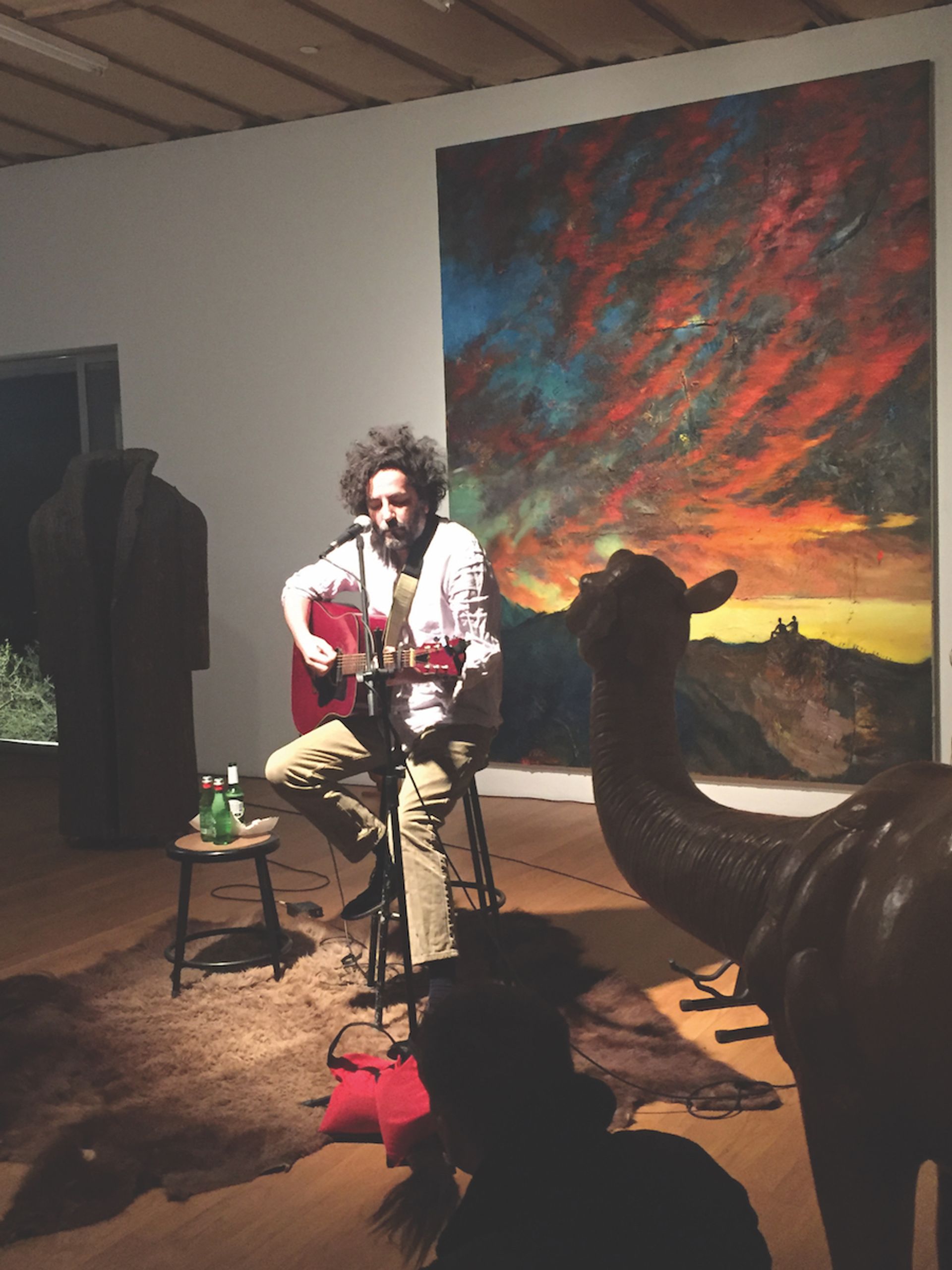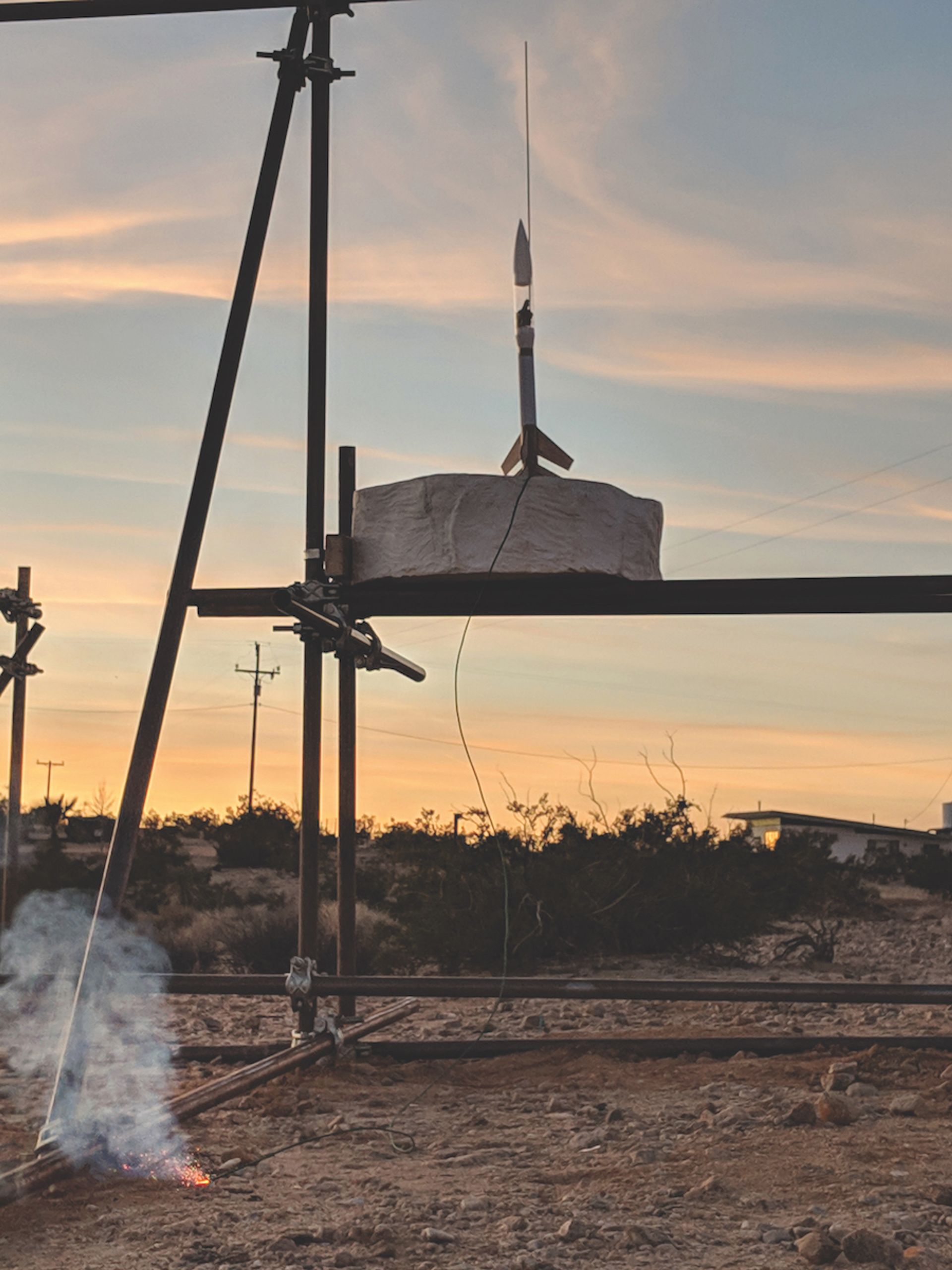Leibovitz’s photo finish: 4,000 works in 45 minutes
“Everyone have sneakers on?” Annie Leibovitz ribbed the press before taking us on a 45-minute tour through a labyrinth of some 4,000 photographs from the 1960s and early 1970s at Hauser & Wirth’s Los Angeles outpost, in a restaging of a show first seen at the Luma Foundation in Arles, France. Leibovitz’s dedication to documentation is on full display: photojournalistic assignments for Rolling Stone, pictures of basically every celebrity—“That was the first time I’d seen cocaine,” Leibovitz quipped about a series of Ike and Tina Turner—on the presidential campaign trail with Hunter S. Thompson, the famous shot of John Lennon curled up naked on Yoko Ono before he was murdered later that day, wild photos of the Rolling Stones tour in 1975. The exhibition “is an ode to a young photographer”, Leibovitz said, “not only myself as a young girl learning to see, but to show how obsessed and crazy you have to be to do this.”

Destroyer playing at the opening for Friedrich Kunath’s monograph, Sincerely Yours at Blum & Poe Photo: Max Williams
Destroyer smashes it at Blum & Poe
There’s a certain candor in Friedrich Kunath’s paintings, which often have text crossing lush, romantic landscapes like an aerial banner with no airplane, that pairs well with music. For the launch of his monograph, I Don’t Worry Anymore, which includes contributions from a substantial cast of characters—the poet Ariana Reines, the novelist James Frey, and the former tennis player-turned-art collector John McEnroe—Kunath invited the Canadian troubadour Daniel Bejar, aka Destroyer, to perform in front of one of those dreamy landscapes. The upstairs gallery at Blum & Poe was packed (whether there were more people there to support Kunath or to see Destroyer, we may never know) and Destroyer’s songs felt exactly right: romantic without being mawkish, funny without being inane. The musician and the painter were a pairing no DJ could have mixed better. “This is big for me,” said Kunath, who was a huge fan of the musician. Bejar played a mix of old and new songs while propped on a stool on top of a bear rug with a camel sculpture in front of him. “I want to thank Friedrich for letting me out tonight,” he joked. “It’s nice to get out of Canada once in a while.”

Suzanne Jackson Photo: Scott Cameron Weaver
Suzanne Jackson’s modest revival
In 1968, the artist Suzanne Jackson opened Gallery 32 in the Granada Buildings, a strange old complex of Mediterranean and Spanish Colonial Revival architectural oddities built in the 1920s off of Wilshire Boulevard in Koreatown. She put together shows with future legends such as David Hammons, Betye Saar and Emory Douglas. Fifty years later, the independent curator Scott Cameron Weaver opened O-Town House in the Granada—now behind a Chuck E. Cheese. He’s given over his space to Jackson, who now lives in Savannah, Georgia, to show a series of new paintings, as well as ephemera (flyers, grocery lists) from the Gallery 32 days. “I don’t know I would say it was ‘influential’,” Jackson said bashfully at the opening last weekend, wearing a purple dress in front of her new purple abstract works. “I would,” interjected her friend. “Don’t let her modesty fool you.”

The Magic Hour No. 4 featuring a new project by Charles Long, with Phana Phang Courtesy of The Magic Hour
Houston, we have a problem
The artist Charles Long bellowed the countdown to the launch of his model rocket— “11… 16… 107… 4,562…”—before the rocket blasted off into the sky above Alice Wang and Ben Tong’s Magic Hour art space, tucked off a dirt road out in the middle of the desert landscape of 29 Palms, California. Then, nothing. “I think the fuselage didn’t open,” Long opined. “Which happens,” he tacked on, wryly. Long is a consummate master trickster. His recent show at the Hammer Museum featured “the strange correlation in form between the surface of the severed tree stump and the cross-section of the human penis,” and this rocket launch was no ordinary space exploration. In the rocket’s aforementioned fuselage were several caps of psilocybin mushrooms (most of the attendees had sampled the payload “to make sure it was the real stuff,” said one woman with a giggle), and the opening was meant to spread spores of love and understanding into the atmosphere. Well, after a quick search in the bush, we found the rocket, and it had indeed broken apart: mission accomplished. “That’s one small sliced dick for man, one giant absence of a phallus for mankind,” Long said triumphantly.


